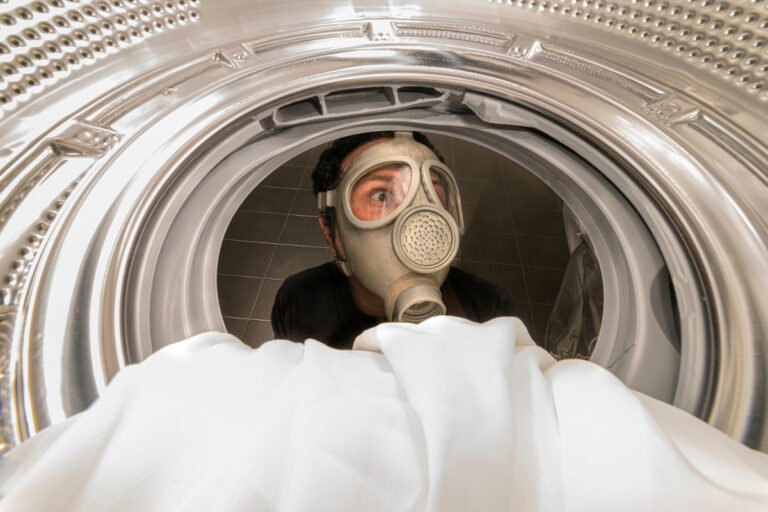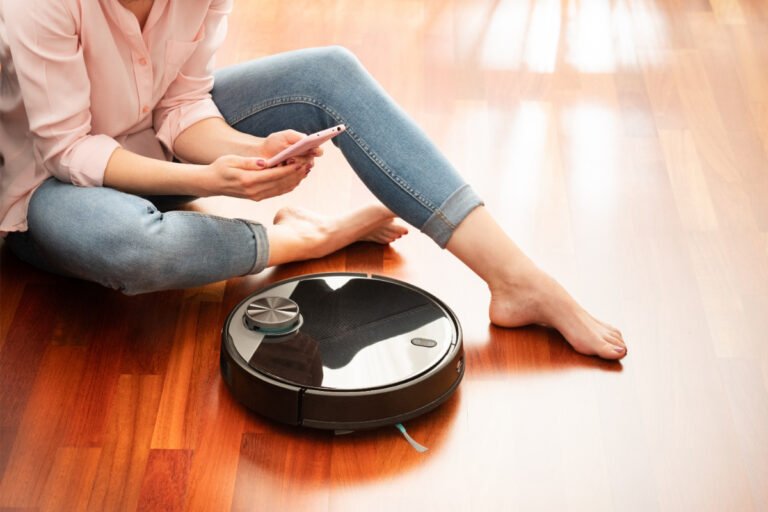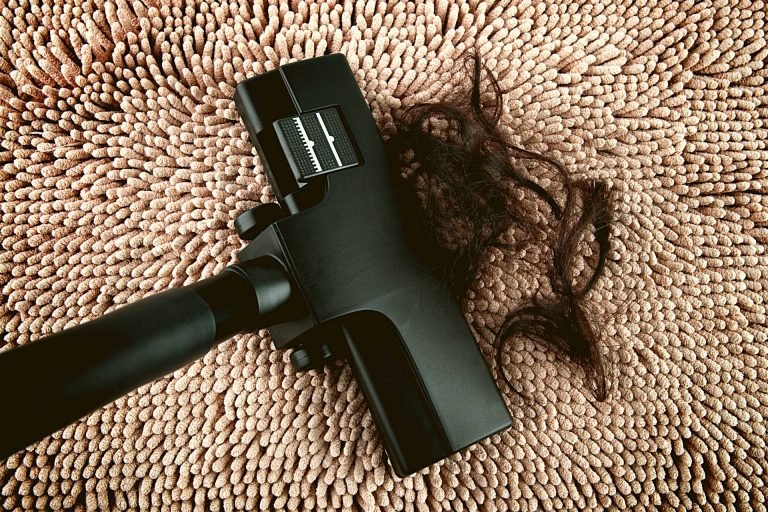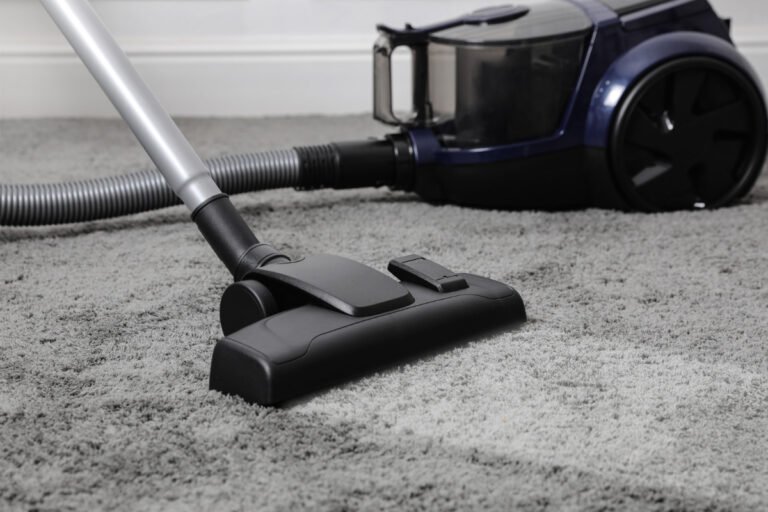How to Store Throw Pillows: Maintaining Fluff and Form
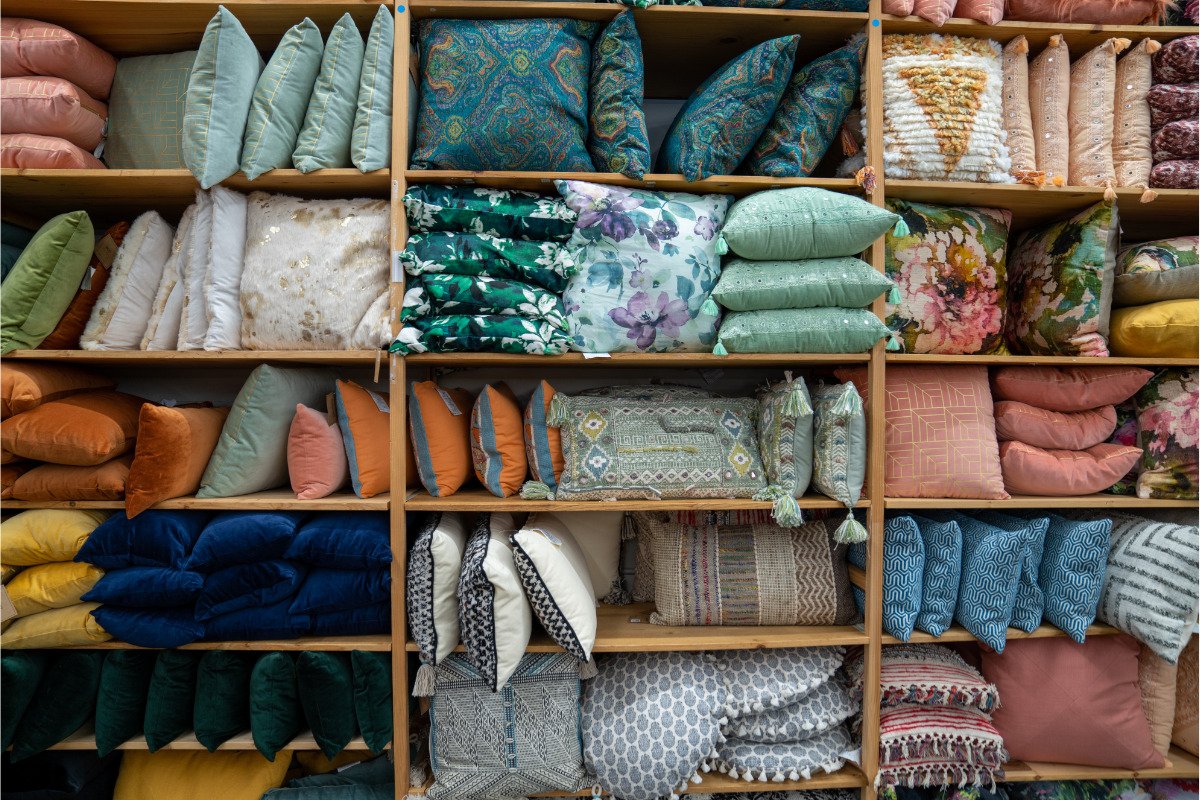
It’s the end of a long day, and you’re finally settling down on your comfortable couch. You reach out for your favorite throw pillow, which adds comfort and an aesthetic appeal to your living room. Now imagine if this throw pillow was worn out, faded, or worse, musty from improper storage. Not quite the relaxing scenario you had in mind? That’s precisely why knowing how to store throw pillows is essential.
Throw pillows are more than just fluffy accessories; they are critical elements that add personality and comfort to our homes. They come in various colors, patterns, materials, and sizes, each adding a unique touch to our décor. However, their beauty and utility can quickly fade without proper care, especially regarding throw pillow storage.
Whether you rotate them out seasonally or store extras for guests, maintaining their appearance and longevity is crucial. After all, a well-preserved throw pillow can be the difference between a cozy, inviting couch and a dull, unwelcoming one.
The Basics of Throw Pillows

Throw pillows are more than just a cozy companion for your couch or bed. They are an artistic expression, a splash of personality, and a touch of home comfort, all rolled into one compact, cuddly package. Whether brightening a neutral space with a pop of color or adding texture to a minimalist décor, throw pillows can transform a room.
Typically smaller than the standard sleeping pillow, throw pillows, also known as accent or decorative pillows, are primarily used for aesthetic purposes. They can be square, round, rectangular, or any other shape that adds to the décor. While they provide some level of comfort, their main job is to make your space look more inviting and like you. They are the finishing touch, the icing on the cake, the cherry on top of your décor.
🤍Materials Used in Throw Pillows
Throw pillows can be made from various materials, each bringing its distinct feel and appearance. Cotton is a popular choice for its breathability and durability. It’s easy to clean, which makes it an excellent option for homes with kids or pets. On the other hand, Velvet adds a touch of luxury and warmth, perfect for creating a cozy and opulent atmosphere.
Then there’s linen, known for its natural, rustic appeal and excellent longevity. For those seeking a more lavish look, silk and satin throw pillows offer a smooth, shiny finish that screams elegance. And let’s not forget faux fur and leather, which bring a unique texture and visual interest to the mix. Each material has charm and function, so the choice depends on your style and needs.
🤍Different Types of Throw Pillows
There’s a fantastic variety of throw pillows, each with a unique allure. Here are some popular types you might come across:
Square Throw Pillows: The most common type, they’re versatile and fit well on any seating furniture.
Round Throw Pillows: These add a playful touch and are perfect for breaking up the monotony of square and rectangular shapes.
Bolster Pillows: Cylindrical in shape, they’re great for adding an artistic element and are often used for support when seated.
Lumbar Pillows: These rectangular pillows offer lower back support and add a layer of comfort and style to your seating.
Box Pillows: Characterized by their thick edges and boxy shape, they bring a unique visual interest to your décor.
Knife Edge Pillows: These have a simple design with two fabric panels stitched together around the edges, ideal for a minimalist aesthetic.
Preparing Throw Pillows for Storage

Now that we understand throw pillows, it’s time to talk about proper storage. Whether you’re storing them away for a season or packing them up for a move, here are some essential steps to ensure your throw pillows remain in good condition.
➡Cleaning Throw Pillows Before Storage
Before tucking away our beloved throw pillows, we must ensure they are clean. Just like you wouldn’t put away dishes without washing them, your throw pillows deserve the same care. Not only does cleaning help maintain their appearance, but it also prevents unpleasant surprises like mold or mildew when you retrieve them later.
Start by checking the care label on your pillow. Some throw pillows are machine washable, which makes life easier. However, due to their delicate fabric or intricate details, others might require dry-cleaning or spot-cleaning. If your pillows have removable covers, remove them and clean them according to the instructions.
For those non-removable ones, spot cleaning is usually a safe bet. Mix a small amount of mild detergent with warm water and gently dab the soiled area using a clean cloth. To ensure it doesn’t discolor the fabric, remember to test this solution on an inconspicuous pillow part first.
➡Drying Throw Pillows Properly
Once your throw pillows are clean, it’s time to focus on drying them properly. Any residual moisture can lead to mold or mildew growth during storage, ruining your beautiful pillows. You can dry the pillows on low heat if the care instructions permit. Consider adding a few clean tennis balls to the dryer to prevent clumping. They will help fluff up the pillows as they dry.
Air drying is the way to go for pillows that aren’t dryer-safe. Lay them flat on a clean towel and let them dry naturally. Ensure they are completely dry before proceeding to the next step. It might require a little patience, but believe me, it’s worth it.
➡Tips for Removing Stains and Odors
Here are a few tips for tackling stubborn stains and odors on your throw pillows:
Oil-based stains: Apply a small amount of dish soap to the stain and gently rub it before washing. Dish soap is designed to cut through grease and can be very effective.
Ink stains: Try using rubbing alcohol. Dab it onto the stain with a clean cloth and blot until it lifts.
Wine stains: A mixture of baking soda and water can do wonders. Apply the paste to the stain, dry it, and then brush it off.
Odors: Baking soda is your best friend. Sprinkle a generous amount on the pillow, leave it overnight for a few hours, and then vacuum it off. Baking soda is a natural deodorizer and can help remove unwanted smells.
How to Store Throw Pillows: Right Method

✔Using Pillow Covers for Protection
Imagine sending your throw pillows on a long journey. You wouldn’t let them travel without proper protection, would you? That’s where pillow covers come into play. They serve as the armor for your throw pillows, defending them against dust, dirt, and those pesky little bugs that might want to make a home in your beloved pillows.
Pillow covers made from breathable fabrics are the knights in shining armor here. They allow air circulation, preventing any moisture build-up that could promote mold or mildew growth. Materials such as cotton or linen are excellent for their breathability and durability.
When choosing a pillow cover, consider buying a well-fitted outfit for your throw pillow. It should hug your pillow comfortably, not too tight to deform its shape, and not too loose to let in dust or pests. It’s like tucking your pillows into their snug beds, ensuring they stay fresh and clean throughout pillow storage period.
✔Vacuum Sealing for Space-Saving Storage
If your storage space mirrors a cramped city apartment more than a sprawling suburban house, vacuum sealing might be your savior. This process involves placing your throw pillows in special bags and using a vacuum cleaner to suck out all the air. The result? Your bulky throw pillows magically shrink in size, becoming compact and easy to store.
But remember, every magic trick comes with a caveat. Vacuum sealing can sometimes change the shape of the pillows, particularly if they’re stored this way for a long time. It’s best suited for down or synthetic fill pillows as they bounce back to their original shape more readily than foam ones. So, when you release your pillows from their vacuum-sealed state, give them a good shake and fluff to help them regain their fluffiness and shape. It’s like waking them up from a long, deep sleep!
✔Storing in Plastic Bins or Boxes
Storing throw pillows in plastic bins or box is a time-honored method that has stood the test of time. It’s like a cozy tiny home for your pillows, keeping them safe from dust, pests, and unwanted moisture. When choosing bins or boxes, opt for clear plastic ones. This simple trick lets you see what’s inside without opening each box. It’s like having a window into your stored items, saving you time and effort when you need to retrieve them.
Remember, packing is an art. Start by placing the heavier pillows at the bottom and then layer the lighter ones on top. It distributes the weight evenly, preventing any deformation. But don’t overpack! Your pillows should fit comfortably without being squashed. After all, they need space to breathe, just like we do!
✔Climate-Controlled Storage Considerations
Storage isn’t just about putting things away; it’s about maintaining their condition, too. And when it comes to throwing pillows, the climate can significantly affect their longevity. High humidity might invite unwanted guests, like mold and mildew, while extreme dryness could cause certain fabrics to crack or become brittle.
That’s where climate-controlled storage comes into play. It helps maintain a stable temperature and humidity level, providing an ideal environment for throw pillows. If this sounds like a luxury not readily available, worry not. You can mimic these conditions by storing your pillows in a cool, dry place, away from direct sunlight or heat sources.
Best Practices for Storing Throw Pillows
⚪Proper Positioning of Throw Pillows in Storage
Proper positioning is the key to maintaining the shape and integrity of your throw pillows during storage. Picture yourself playing a game of Tetris, where each pillow needs to fit just right without being squished or distorted. Start with the largest and heaviest pillows at the bottom, gently layering the lighter ones on top. This strategy not only maximizes space but also prevents any damage to the pillows from excessive weight.
Remember, your pillows need their personal space too! Avoid overpacking. They should fit comfortably without feeling squeezed. It’s like giving them their cozy little compartment where they can peacefully rest until they’re needed again.
⚪Avoiding Direct Sunlight and High Humidity Areas
While sunlight and humidity might be perfect for a beach day, they are not the best companions for your stored throw pillows. Direct sunlight can cause colors to fade and fabrics to degrade over time, robbing your pillows of their vibrant charm. High humidity creates a breeding ground for mold and mildew, leading to unpleasant odors and potential health risks.
To protect your throw pillows from these hidden foes, store them in a cool, dry place away from windows or other sources of direct sunlight. If you live in a particularly humid area, consider using a dehumidifier in the storage room to maintain an ideal environment for your pillows.
⚪Regularly Checking Stored Throw Pillows for Any Issues
Just like us, throw pillows benefit from regular check-ups. Periodically inspecting your stored pillows can help you catch any issues early before they become major problems. Look for signs of dampness, mold, mildew, or pest infestations. Fluff and air out the pillows to prevent moisture build-up and keep them fresh.
Remember, these pillows are more than just decorative items. They’re an integral part of your home, adding comfort and personality to your living space. By checking on them regularly, you’re preserving their condition and ensuring they’ll be ready to brighten up your rooms when you need them again.
Retrieving and Reusing Stored Throw Pillows

Retrieving your throw pillows from storage bins, dresser drawers, or linen closets can feel like a mini-reunion. But they might need some sprucing up before they reclaim their rightful place on your couch or bed. Here are some steps to help them shake off the storage blues:
- Air Them Out: Just like us, your pillows need a good stretch and some fresh air after a long nap. Leave them in a well-ventilated area for a few hours to eliminate stale smells.
- Fluff and Shake: Give your pillows a gentle shake and fluff to restore their shape and volume. It’s like a mini workout for them!
- Spot Cleaning: Check for any stains or spots that might have appeared during storage. Use a mild detergent and warm water to gently clean these areas.
- Freshen Up with Fabric Spray: A light mist of fabric spray can add a refreshing scent and eliminate any lingering odors.
Tips for Reintegrating Throw Pillows into Your Décor
Your throw pillows are ready to reclaim their place in your home. Here are some tips to help them seamlessly blend back into your décor:
Rotate and Rearrange: Don’t just return the pillows to their old spots. Play around with different arrangements to give your space a fresh look.
Mix and Match: Combine stored pillow inserts with new ones to create interesting contrasts and textures. It’s like hosting a get-together for old and new friends!
Seasonal Themes: If you’re retrieving your seasonal pillows around a holiday or season change, incorporate them into a themed décor. They’ll love being part of the festivities!
Comfort is Key: While aesthetics are important, remember the primary function of your throw bed pillows – comfort. Make sure you place them where they can provide the most coziness.
Frequently Asked Questions
Q: Can I store decorative throw pillows in the garage?
A: While it’s technically possible to store pillows in the garage, it’s not an ideal place. Garages often fluctuate in temperature and have high humidity levels, which can harm your pillows over time. If the garage is your only option, ensure they are stored in sealed, waterproof containers, preferably placed on shelves to avoid any possible water damage from the floor. It might also be worth investing in a dehumidifier to help control the humidity levels.
Q: How often should I clean my throw pillows before storage?
A: It’s advisable to clean your throw pillows before storing them away. How often you clean them depends on their usage and the manufacturer’s instructions. Generally, a thorough cleaning every six months is a good rule of thumb. However, if your pillows are heavily used or have been spilled, you may need to clean them more frequently. Always remember to fully dry your pillows before storage to avoid mold and mildew growth.
Q: What should I do if my stored throw pillows have developed a musty smell?
A: If your stored throw pillows have developed a musty smell, it may be a sign of excess moisture or inadequate ventilation during storage. Here’s what you can do: First, air your pillows in a well-ventilated area for several hours. If weather permits, direct sunlight can also be beneficial. Next, consider using fabric sprays or mild detergent to freshen them up. Just ensure the pillows are completely dry before putting them back into use. If the musty smell persists, it might indicate mold or mildew growth, in which case a deep cleaning or professional treatment may be necessary.
Conclusion
The art of storing, retrieving, and reintegrating throw pillows is a journey that requires careful planning and execution. It’s about creating a haven for your pillows during their off-duty times, ensuring they’re well-preserved and ready to shine. By following these best practices, you not only extend the life of your throw pillows but also maintain their charm and comfort.
Now, it’s over to you. How do you store and care for your throw pillows? Do you have any tips or tricks not covered in this guide? We’d love to hear your thoughts and experiences. Leave a comment below and join the conversation. After all, we’re all here to learn from each other, one throw pillow at a time. Let’s turn our homes into cozy, stylish sanctuaries.

